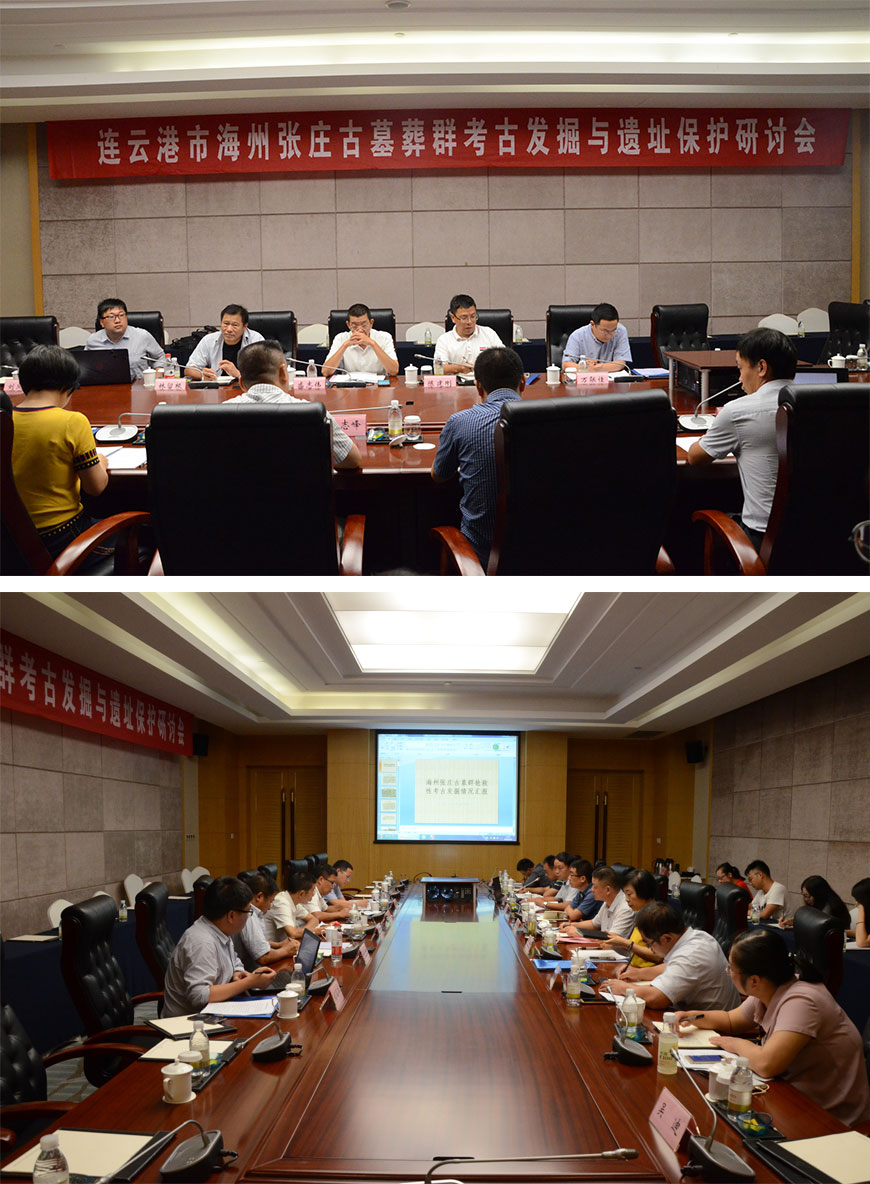In order to further improve the level of archaeological excavation and site protection of ancient tombs, and promote the protection and utilization of our city’s historical and cultural heritage, on August 30, the "Lianyungang Haizhou Zhangzhuang Ancient Tombs Group" “Excavation and Site Protection Seminar” was held. The meeting was presided over by Mao Zhifeng, a member of the Party Committee and deputy investigator of the Municipal Bureau of Culture, Broadcasting and New Zealand, Sheng Zhiwei, an investigator from the Cultural Relics Protection Division of the Provincial Cultural Relics Bureau, Lin Liugen, director of the Provincial Institute of Archaeology, and the Architectural Design and Research Institute of Southeast University Chen Jiangang, assistant to the dean of the Heritage Institute of the Co., Ltd., Liu Fengyang, deputy chief engineer of Tsinghua Tongheng Design Institute, and deputy director of the First Cultural Protection Institute, and Wan Lianjia, deputy director of the Cultural Heritage Center of the Cultural Heritage Institute of Nanjing University, and other leaders and experts attended. Relevant personnel from the Municipal Cultural Relics Bureau, the Municipal Planning Bureau, the Haizhou District Planning Bureau, the Haizhou District Cultural and Sports Bureau, and the Municipal Museum attended the meeting.

On the morning of the 30th, the participating experts made a field trip to investigate the archaeological excavation site of the Zhangzhuang ancient tombs in Haizhou, and went to the Municipal Museum to inspect some of the unearthed cultural relics. A seminar was held in the afternoon, and the city museum first made a report on the archaeological work of the Zhangzhuang ancient tombs. During the discussion, the experts affirmed the good results of the rescue archaeology, excavation, exploration, and protection of the Zhangzhuang ancient tomb group, focusing on the value and significance of the tomb group, the chronology, the shape of the tomb, the unearthed artifacts, and the protection and protection of the site. Utilizing and other aspects issued pertinent opinions and suggestions, and proposed future work directions and measures.

The successful holding of this seminar has important guiding significance for the next step of archaeological excavation and protection planning of Zhangzhuang ancient tombs in Haizhou. In the next step, we will promptly adjust the working ideas according to the spirit and requirements of the meeting, improve the protection measures of cultural relics, and integrate other surrounding historical and cultural resources to better publicize and display the historical culture of Lianyungang.

